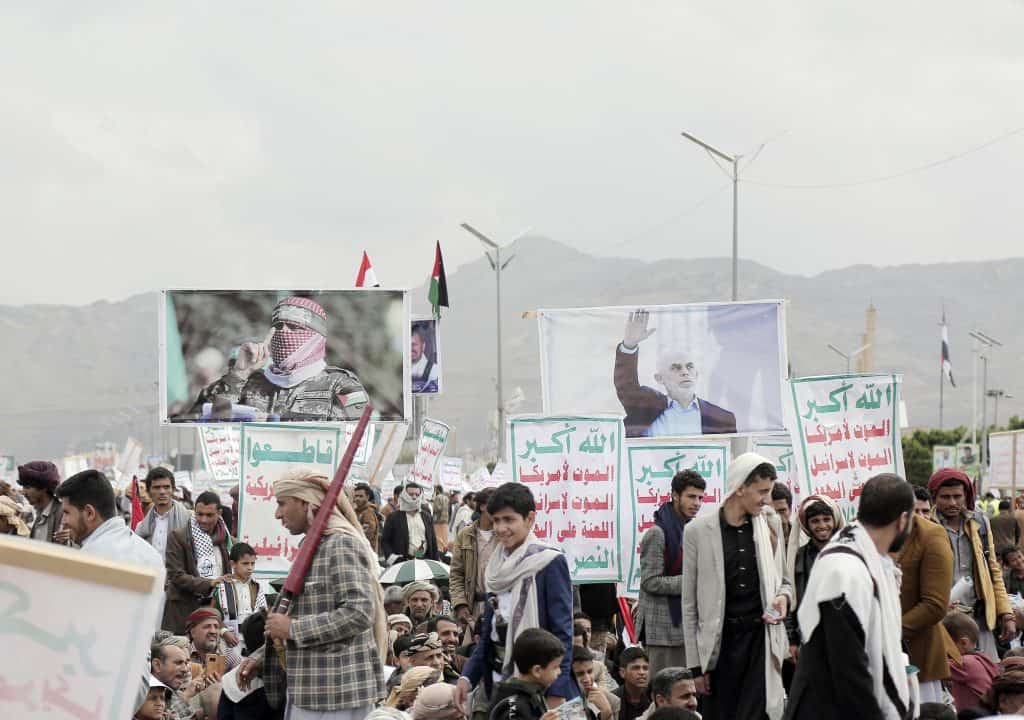
On Apr. 29, Iranian-backed Houthis in Yemen launched several attacks targeting commercial and military ships. A statement on the official spokesperson’s Telegram says, “The Yemeni armed forces carried out military operations against hostile warships in the Red Sea, including targeting two American warships, using a number of drones. Meanwhile, the naval forces, rocket force, and UAVs conducted a joint operation targeting the ship (Cyclades) in the Red Sea.” They further claimed another drone attack on an Israeli ship (MSC Orion) in the Indian Ocean.
“Iranian-backed Houthi terrorists fired three anti-ship ballistic missiles and three UAVs from Yemen into the Red Sea towards MV Cyclades, a Malta-flagged, Greece-owned vessel,” said U.S. Central Command (CENTCOM). The Houthis released a drone video documenting the assault on the MV Cyclades. It is worth noting that such releases are rare for the Houthis; they have only shared one other video, which was when they hijacked the Galaxy Leader on Nov. 19.
Additionally, CENTCOM noted that it “successfully engaged and destroyed one Houthi launched UAV on a flight path towards USS Philippine Sea and USS Laboon in the Red Sea.” No damage or injuries were reported during the offensive.
Since Nov. 19, over one month after the eruption of the war in Gaza, the Houthis targeted more than 100 ships in the Red Sea and the Arabian Sea with drones and missiles, according to their leader Abdul Malek al-Houthi. He claimed that the targeted ships were linked to Israel or heading towards its ports. These strikes forced commercial companies to shift to longer and more costly routes around Africa. In response, since Jan. 11, the United States and Britain have led a coalition and launched airstrikes against the Iran-backed group. As a result, the Houthis have threatened to expand their operations to include American and British warships.
The American-British airstrikes on Houthi positions in Yemen decreased by 386 percent in April compared to March. In April, the United States conducted 14 airstrikes targeting Houthi positions, 12 of which were in the Hodeidah Governorate and two in Taiz. In contrast, the United States and the United Kingdom carried out 68 airstrikes targeting Houthi sites in March across four governorates: Hodeidah (46 airstrikes), Sana’a (9 airstrikes), Saada (9 airstrikes), and Hajjah (3 airstrikes).
The ongoing military engagements undertaken by the coalition led by the United States and the United Kingdom against the Houthis, coupled with their naval deployments, signify a concerted effort to mitigate threats in the area. However, recent incidents involving attacks on ships in the Red Sea and Indian Ocean reveal that the group is undeterred. Despite the sustained military actions, the Houthis have continued their aggression and explicit threats to broaden their operational range to target more ships. Moreover, the attempted assaults targeting American destroyers in the area highlight the inability to deter the Houthis, coinciding with a noticeable reduction in the frequency of strikes executed by the U.S.-U.K. coalition against the Iran-backed group.
The Houthis threat to the stability of the region in general and to maritime security is on the rise, and Iran plays a significant role in emboldening the group. Nasr al-Din Amer, the deputy media secretary for the Houthis, revealed their readiness and commitment to assist Iran or its allies in the region in the event of the conflict escalating into a comprehensive regional war. He affirmed their dedication to defending their allies in the resistance axis. He further stated, “When it comes to those we ally with, such as Iran and other parties in the resistance axis, we will indeed stand firmly and resolutely by their side.”
Houthi officials have made overt declarations of hostility towards the United States, outlining their strategic aim to strike American interests throughout the region. These potential targets encompass U.S. military installations in Djibouti, Eritrea, or Somalia, although the precise extent of the Houthis’ capacity for such operations remains uncertain. While these threats may sometimes ring hollow, the escalating frequency of assaults on ships, coupled with explicit threats against American naval assets, necessitates a reevaluation of the American-British airstrikes’ efficacy.







